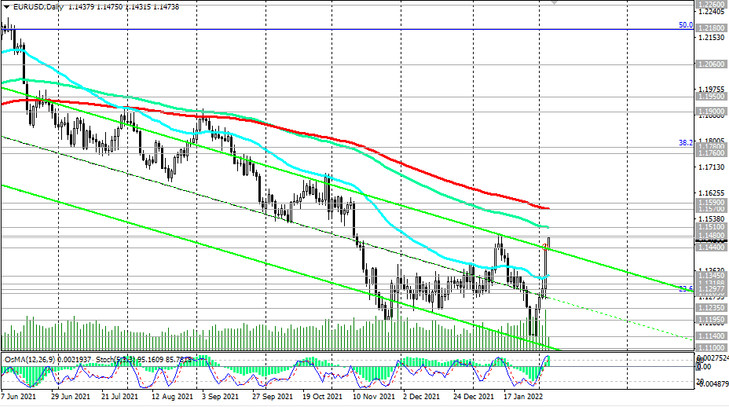ECB President Christine Lagarde was unable to give a clear answer yesterday to the question of how the ECB would treat the prospect of higher inflation in the region. She admitted the possibility of high inflation persisting for a longer time than previously thought, while, in her opinion, inflationary risks are shifted towards growth.
In the Eurozone, inflation is still somewhat lower than in the US and UK, but it is growing steadily. In January, annual inflation in the Eurozone was 5.1%, while inflation in the UK in December was 5.4%, and in the US - 7%. The accelerating rise in inflation in the Eurozone seems to have come as a surprise to the ECB and fueled speculation that the ECB may be forced to hike interest rates sharply to curb inflation.
In Europe, economic growth slowed sharply at the end of last year. At the same time, earnings in the Eurozone grew by only 1.36% in the 3rd quarter. This is the lowest growth since the introduction of the euro in 1999, according to the ECB.
A possible increase in the interest rate in the Eurozone in the current environment could have a very painful effect on its economy and could even provoke a recession, according to economists.
On the daily chart of the pan European stock index EURO STOXX50, you can see that the price has come close to a key support level (200-period moving average). A breakdown of the local support level 4040.0 increases the risk of breaking the long-term bullish trend of this index, which can cause a chain reaction of risk aversion and exit of investors from European assets. In this situation, the ECB will find it difficult to tighten monetary policy even in the face of accelerating inflation. This is probably just an assumption and a hypothetical scenario, but at the beginning it may provoke the strengthening of the euro as a funding currency, despite the soft policy of the ECB. However, further prospects for the euro in this case become vague.

Meanwhile, the EUR/USD pair is growing today for the 5th day in a row and at the beginning of today's European session is traded near the local resistance level 1.1480. Its positive dynamics within the upward correction is preserved. Market participants today are waiting for the publication (at 13:30 GMT) of the monthly report of the US Department of Labor on employment in January. According to the forecast, NFP is expected to grow by 150 thousand new jobs (against +199 thousand in December and +249 thousand, +648 thousand in previous reporting periods). The decrease in this indicator is a negative factor for the USD. Unemployment is expected to remain at 3.9% in January. If the data of the report of the Ministry of Labor turns out to be significantly worse than the forecast, then this, if it does not cancel the Fed's determination to a tough scenario regarding the prospects for monetary policy, then it will cast doubt on it, and this, in turn, may negatively affect the USD.





